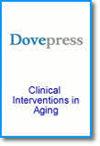Effect of Continuous Positive Airway Pressure on Incident Frailty in Elderly Patients with Obstructive Sleep Apnea: A Study Based on Propensity Score Matching
IF 3.7
3区 医学
引用次数: 0
Abstract
Background: The concomitant rise in the prevalence of obstructive sleep apnea (OSA) and frailty among the elderly population has been linked to an increase in mortality rates. Despite continuous positive airway pressure (CPAP) being the gold standard treatment for OSA, its impact on incident frailty remains inadequately explored.Methods: In this cohort study, we analyzed data from 1290 patients diagnosed with OSA, aged 60 years and older. A subset of 71 patients who demonstrated high adherence to CPAP therapy were categorized as the CPAP group. Propensity score matching (PSM) was employed at a 1:4 ratio, matching for variables such as age, gender, body mass index (BMI), and sleep apnea-hypopnea index (AHI), to establish a non-CPAP group for comparison. The FRAIL scale was utilized to evaluate the frailty status of participants. Logistic regression analysis examined the relationship between CPAP therapy and incident frailty, as well as its individual components, in elderly patients with OSA.
Results: During a median follow-up period of 52 months, incident frailty was observed in 70 patients (19.7%). Patients with OSA receiving CPAP therapy exhibited a lower incidence of frailty compared to those not receiving CPAP (11.26% vs 21.83%, P=0.045). In the multivariate model, CPAP therapy was significantly correlated with a reduced risk of incident frailty (OR = 0.36, 95% CI, 0.15– 0.88; P = 0.025). Subcomponent analyses revealed that CPAP was associated with a lower risk of fatigue (OR=0.35, 95% CI, 0.19– 0.63; P < 0.001), resistance (OR = 0.32, 95% CI, 0.14– 0.74; P=0.008), and weight loss (OR = 0.38, 95% CI, 0.19– 0.75; P = 0.007).
Conclusion: CPAP therapy was associated with a reduced risk of incident frailty among elderly patients with OSA.
持续气道正压对老年阻塞性睡眠呼吸暂停患者体质虚弱的影响:基于倾向得分匹配的研究
背景:阻塞性睡眠呼吸暂停(OSA)发病率和老年人体质虚弱的同时上升与死亡率的上升有关。尽管持续气道正压(CPAP)是治疗 OSA 的金标准,但其对体弱事件的影响仍未得到充分探讨:在这项队列研究中,我们分析了 1290 名 60 岁及以上确诊为 OSA 患者的数据。其中,71 名高度坚持使用 CPAP 治疗的患者被归入 CPAP 组。我们采用倾向得分匹配法(PSM),将年龄、性别、体重指数(BMI)和睡眠呼吸暂停-低通气指数(AHI)等变量按 1:4 的比例进行匹配,以建立非 CPAP 组进行比较。FRAIL 量表用于评估参与者的虚弱状况。逻辑回归分析检验了 CPAP 治疗与老年 OSA 患者的虚弱状况及其各个组成部分之间的关系:结果:在中位 52 个月的随访期间,70 名患者(19.7%)出现了虚弱症状。接受 CPAP 治疗的 OSA 患者与未接受 CPAP 治疗的患者相比,虚弱发生率较低(11.26% vs 21.83%,P=0.045)。在多变量模型中,CPAP 治疗与虚弱发生风险的降低显著相关(OR = 0.36,95% CI,0.15- 0.88;P = 0.025)。子成分分析显示,CPAP 与疲劳(OR=0.35,95% CI,0.19- 0.63;P <;0.001)、抵抗(OR=0.32,95% CI,0.14- 0.74;P=0.008)和体重减轻(OR=0.38,95% CI,0.19- 0.75;P=0.007)的风险降低相关:CPAP疗法可降低老年OSA患者出现虚弱的风险。
本文章由计算机程序翻译,如有差异,请以英文原文为准。
求助全文
约1分钟内获得全文
求助全文
来源期刊

Clinical Interventions in Aging
GERIATRICS & GERONTOLOGY-
CiteScore
6.20
自引率
2.80%
发文量
193
期刊介绍:
Clinical Interventions in Aging, is an online, peer reviewed, open access journal focusing on concise rapid reporting of original research and reviews in aging. Special attention will be given to papers reporting on actual or potential clinical applications leading to improved prevention or treatment of disease or a greater understanding of pathological processes that result from maladaptive changes in the body associated with aging. This journal is directed at a wide array of scientists, engineers, pharmacists, pharmacologists and clinical specialists wishing to maintain an up to date knowledge of this exciting and emerging field.
 求助内容:
求助内容: 应助结果提醒方式:
应助结果提醒方式:


